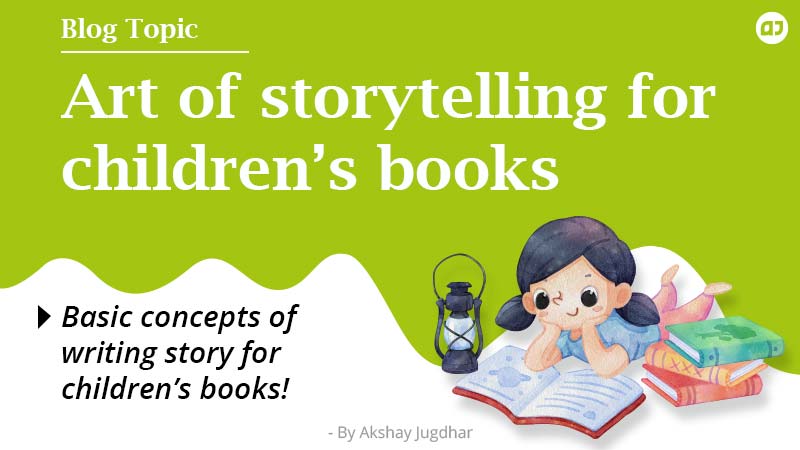Art of storytelling for children’s books

“How to write a fascinating story for children's books? well, that's the exact question I will try to answer in this post.”
Children's books are primarily intended for educational, literary, amusement, and fantasy purposes. The most important aspect of any genre is storytelling. Storytelling in children's books should never be taken lightly, as children pay close attention to the stories and discover the most intriguing loopholes you would never suspect. Keep in mind the core ideas of storytelling to keep your story childproof.
Storytelling is an art that everyone should acquire and develop. Narrating an incident takes skill because you don't want to omit any details and still keep your audience interested. Some experts believe the story can be divided into three segments, while others believe it can be divided into five. Both types of storytelling are useful and, to begin with, are sight variants of each other.
Three-Part Story
Setup, conflict, and resolve are the 3 stages of a three-part story structure. The three-act structure is straightforward to use because the first part deals with the setting of your story.
The Setup:
The story's setup part answers questions as Who, Where, What, and When. The setup forms the groundwork, and a strong foundation leads to great storytelling. Use this segment to tell the reader what the narrative is about and who the characters are. If you make the introduction unnecessarily long, readers will lose interest and find it difficult to focus on the storyline. Use direct language. The story's idea should be established within the first few pages, and all of the important characters should be introduced. The setting, or the location where the story takes place, should be addressed.
The Plot:
The plot is the heartbeat of any story. The plot, or middle part of your story, is where the majority of the action takes place. You can vary the storyline twists and surprises in your story depending on the age group. For readers aged 6-7, you should aim for a straightforward, understandable plot. Keep it simple. The plot of the story should always be strong. The most clearly and simply written stories find their way into the hearts of children. Many people believe that creating a children's book is simple, but they are mistaken. Children will listen to your story if it has a plot or a reason why it is happening. Your audience will react negatively to a weak plot. Do not rely on the children’s book illustrator to make your story interesting. The duty of a children's book illustrator is to accentuate what is already in the story. Use him wisely to provide additional information in the form of pictures. He can create the mood.
The Climax:
The third and final part of your story is the conclusion. The climax should be properly concluded. All of your children's stories should have a joyful ending. The good guys always triumph. A person with strong willpower always achieves their goals. A fun twist, good ending, or decent cliffhanger should always be incorporated in your children's book. The story you've produced should have a satisfying conclusion and should answer all of the reader's questions. The story is not only ending in the book but also in the minds of the children; they will go to bed knowing that good deeds pay well. Their faith in humanity has been restored. When they wake up the next day, they desire to do something good for society, their teacher, parents, close friends, and pets. Your stories have an impact on how children think. Writing a nice ending is like wrapping up all the loose ends of your stories; it's also a fantastic opportunity to give a brief preview of the following book or a sequel.
Five-Part Story
The five-part story is actually a three-part story divided into subcategories. The setup and resolution are treated in the same manner the same, but the plot is broken into three sections: rising action, climax, and falling action.
Now that you are aware of the three and five-part story, keep the following crucial aspects in mind while writing :
The main character should be someone who is relatable. While it is not always necessary, it does help children connect with the main character.
Keep the plot short and straightforward for children.
Select the correct story length. Make sure your story isn't too long. Children become bored when the story is dragged out, and they lose interest and forget what the story was about. Simply put, your story will lose its purpose.
If you're creating a poem, make sure there's the repetition of words or phrases, as well as a simple rhyme to follow.
Essay writing, elocution competitions, and recitation are a few activities that young students utilise to improve their storytelling talents. Reading through existing literature can be an additional activity to improvise the storytelling. With this statement, I will conclude the discussion on writing children's books for children; if you require any further assistance, please contact me. And I hope you write one of the best stories that children have ever heard.